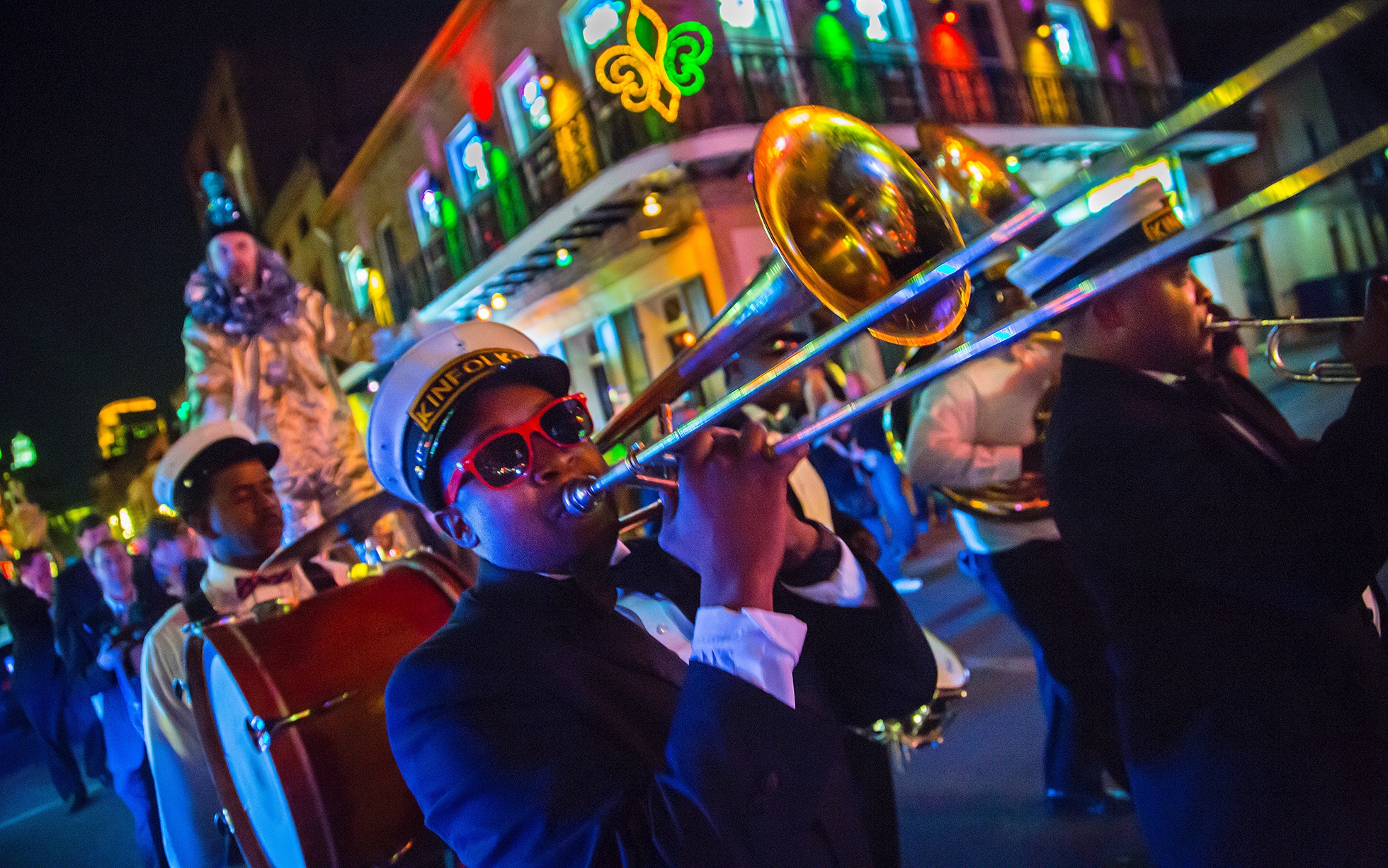New Orleans culture pulses with life shaped by French, Spanish, African, and Indigenous influences. Cultural expression flows through every street, mural, note of jazz, and bowl of gumbo. Streets aren’t just passageways—they narrate stories of heritage, resistance, and reinvention.
They speak through architecture, rhythm, cuisine, and spirit.
Each famous avenue represents a facet of the multi-layered New Orleans culture, serving not just transportation but transmission of memory and meaning.
1. Bourbon Street – The Lifeblood of NOLA Nightlife
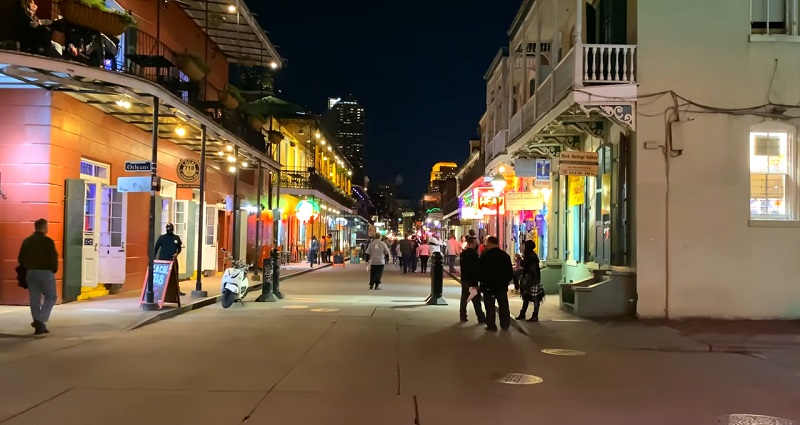
Named after France’s Bourbon royal family, not the liquor, Bourbon Street cuts through the French Quarter like an electric vein of energy, history, and nightly rhythm.
Every block pulses with contrast: sacred jazz collides with party anthems, old traditions swirl alongside modern chaos. It is the kind of place that both welcomes you and dares you to keep up.
History seeps through the pavement. Wrought-iron balconies, some dating back centuries, lean over the street like observant elders.
Beads dangle permanently above doorways. Footsteps follow those of voodoo priestesses, Confederate generals, and saxophonists who changed music forever.
While modernization has layered on neon and noise, much of the original flavor remains intact.
When speaking of iconic venues, certain places demand attention:
- Galatoire’s – A dining institution founded in 1905, known for classic Creole dishes and strict dress codes.
- Lafitte’s Blacksmith Shop Bar – Operating since the 1700s, this candlelit tavern is often called one of the oldest bars in America.
- Old Absinthe House – Once frequented by pirates, politicians, and poets, it continues to serve the green fairy to curious travelers.
During Mardi Gras, Bourbon transforms into a stage with no curtain. Costumed revelers chant for beads while floats roll by, each one echoing themes of satire, celebration, and heritage.
Parades spill into side streets, and balconies fill with camera flashes and raised glasses. Carnival season on Bourbon consumes everything in its path.
2. Royal Street – Art, Elegance, and Antiquity
Royal Street contrasts sharply with its rowdy neighbor. A mere block away from Bourbon’s noise and neon, it offers an entirely different experience, slower, more thoughtful, and visually refined.
Time seems to stretch differently here, interrupted only by the gentle strum of a street guitarist or the whistle of a saxophone echoing off old brick walls.
Cobblestone sidewalks set the stage for antique dealers and art curators who open their doors to collectors and curious minds. Ornate balconies draped in ferns overlook painters dabbing oils on stretched canvas, often stopping to chat with passersby who admire their work.
Daylight hours transform portions of the street into open-air galleries, thanks to traffic closures that invite New Orleans culture to spill freely into public space.
LaLaurie Mansion, infamous for its chilling history, casts a brooding presence that draws those fascinated by the haunted lore of New Orleans. Its architecture alone is enough to provoke questions, but the dark tales attached to it bring an eerie depth to an otherwise elegant stretch.
The street thrives on a curated blend of art, mystery, and refinement. No two visits feel the same, but each carries distinct echoes of the past molded by living artists and voices of today. A walk along Royal often feels like browsing through a living museum, where each building, corner, and performer adds a new exhibit.
Here are some defining features that highlight the essence of Royal Street:
- Ranging from fine art studios to quirky mixed-media shops, showcasing local and international talents.
- European furniture, vintage chandeliers, and Civil War-era curiosities await discovery.
- Jazz musicians, classical quartets, and solo acts provide an evolving soundtrack.
- LaLaurie Mansion remains the street’s most infamous house, drawing curious minds and ghost tour groups.
- Certain blocks close to traffic during daytime hours, allowing a slow, immersive walk without car interruptions.
- Wrought-iron balconies, Creole townhouses, and pastel facades evoke a French-Spanish aesthetic rarely seen elsewhere in the U.S.
3. Chartres Street – The Historic Heartbeat
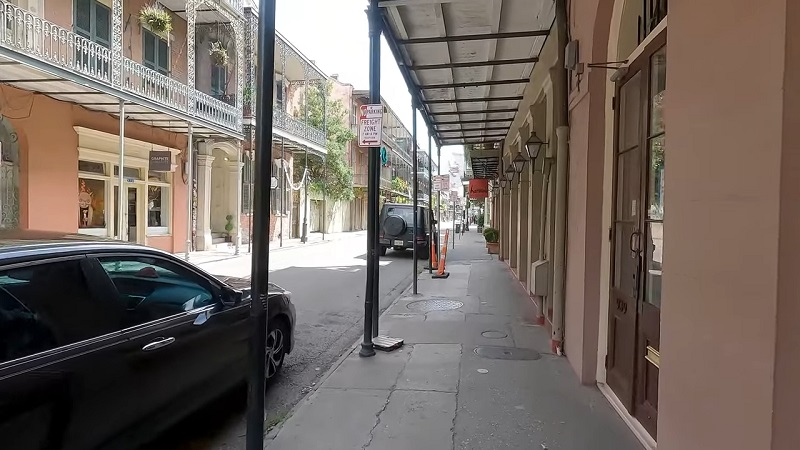
Chartres Street pulses through the French Quarter with a presence that feels carved into the city’s very bones. Named after the French city of Chartres, it exudes an atmosphere where colonial architecture, sacred tradition, and vibrant daily life coexist with little effort.
Cobblestones underfoot echo centuries of footsteps, soldiers, priests, rebels, and now, tourists with café au lait in hand.
Towering above all is St. Louis Cathedral, an architectural marvel with three spires that pierce the sky. A place of worship and reflection, it remains an unmistakable anchor in the city’s skyline.
Adjacent to it, the Cabildo houses exhibits and artifacts that tell of Louisiana’s past, including the Louisiana Purchase and the city’s shifting political tides. Its Spanish colonial façade adds solemnity to the street’s otherwise unhurried grace.
A few steps away, the Pharmacy Museum blurs the line between science and superstition. Apothecary jars, antique surgical tools, and displays on voodoo remedies give visitors a taste of the strange and fascinating medical practices of the 19th century.
Locals pass by casually, coffee in hand, unfazed by the ghosts of science whispering behind old glass cases.
What makes Chartres distinct is not only the density of historical buildings, but the way daily life dances around them. Café terraces buzz, painters sketch, and musicians tune up near weathered balconies. Street performers sing under colonial archways while horse-drawn carriages creak slowly down the road.
4. Dauphine Street – Hidden Culture and LGBTQ+ Life
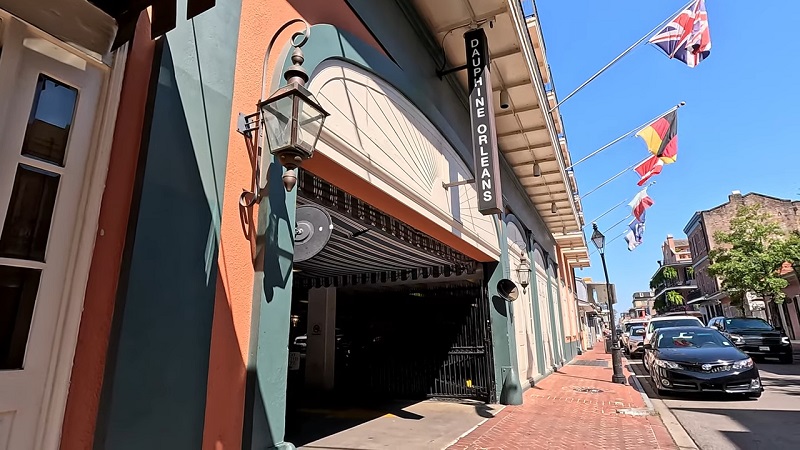
Often bypassed by tourists in pursuit of Bourbon Street’s neon glow, Dauphine Street holds a quieter kind of vibrance. Named in tribute to the French dauphins, the street reflects a legacy of subtlety, grace, and resistance to uniformity.
A stroll along its uneven sidewalks reveals a neighborhood layered in personal stories, expressive freedom, and architectural whispers of the past.
Much of Dauphine’s cultural fabric lives in its local spaces, which form a patchwork of New Orleans culture and history, and unfiltered character.
The following are notable highlights that define the soul of Dauphine Street:
- Good Friends Bar: A vital gathering place for the LGBTQ+ community. Known for its welcoming atmosphere, strong drinks, and a second-story balcony perfect for people-watching during parade season.
- Museum of Death: Curiosity leads many to its entrance, but those who enter find a display that confronts mortality, criminality, and ritual head-on.
- Dauphine Orleans Hotel: A tranquil space enveloped in haunted legend. Some guests seek its proximity to the French Quarter.
Locals gravitate toward Dauphine for its authenticity. Street musicians play for neighbors rather than tourists. Murals don’t scream for attention but wait for wandering eyes. Stories live in garden gates, porch steps, and old brick walls softened by time.
What sets Dauphine apart is its resistance to packaging. No flashy signage, no curated souvenir stops. It holds space for people uninterested in performance, those who seek community, self-expression, and streets that allow for pause.
5. Decatur Street – Music, Markets, and Missed Beats
Once known as Rue de la Levée, Decatur Street hugged the Mississippi River’s edge. In its early days, this stretch functioned as a commercial lifeline, channeling goods, gossip, and gumbo into the heart of New Orleans. Its strategic placement made it a magnet for vendors, drifters, musicians, and merchants alike.
Now, it pulses with a chaotic blend of sound and scent. The clang of streetcars mingles with trumpet riffs. Café aromas waft past brass bands and tarot readers. Foot traffic here isn’t aimless, it’s ritual. People come not just to see but to feel.
Three major destinations draw consistent attention:
- Jackson Square: A historic square where artists sketch portraits and spiritual guides offer readings beneath oaks.
- Café du Monde: A powdered-sugar beacon since 1862, delivering beignets and café au lait to those willing to wait.
- Tujague’s Restaurant: The second-oldest restaurant in New Orleans, where stories simmer with the food.
Despite its commercial polish, layers of grit and rebellion persist. Fading punk stickers cling to poles. Independent record stores hum with echoes of a defiant 1980s underground scene. Somewhere between jazz and jambalaya, ghosts of the punk era scratch out their chorus.
Street performers don’t just entertain—they broadcast resilience. Travelers may snap photos, but buskers chase dreams in real time. Painted buckets double as drum kits. Sidewalks host sax solos, breakdance routines, and poetry recitals.
6. Rampart Street – A Borderline of History and Heritage
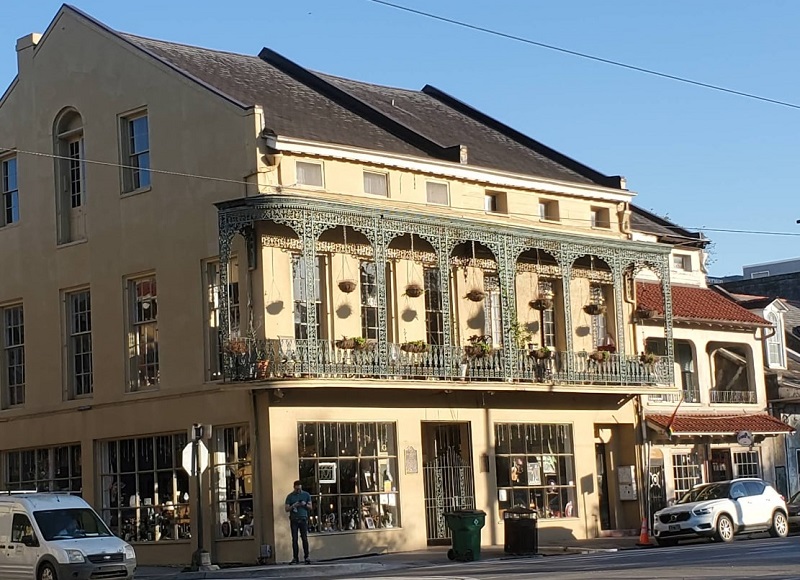
Rampart Street traces the edge of the original French Quarter, named for the ramparts or defensive walls that once stood along its course. These fortifications separated the European settlement from untamed terrain and would later define boundaries of New Orleans culture, class, and resistance.
Over time, Rampart evolved into more than a dividing line, it became a corridor charged with social, artistic, and political energy.
To one side lies the vibrant pulse of Treme, considered the oldest African-American neighborhood in the United States.
On the other, the French Quarter unfolds with its creole architecture and colonial past. Rampart does not merely connect two areas, it draws out their contrasts and harmonies.
Armstrong Park, a green space carved out of historical memory, honors jazz legend Louis Armstrong while preserving the sacred grounds of Congo Square, where enslaved Africans gathered on Sundays to drum, dance, and retain fragments of their heritage in defiance of oppression.
Modern-day Rampart offers a range of cultural touchpoints, including:
- Congo Square: Revered site for African drumming and dance, spiritual ceremonies, and early expressions of freedom.
- Mahalia Jackson Theater: Named after the gospel icon, hosting performances that bridge heritage and contemporary art.
- Bar Tonique: A casual space for craft cocktails and community dialogue, located steps from historical activism.
Murals, statues, and brass plaques tell stories not just of fame but of resistance. Civil rights marches, second lines, and jazz funerals have passed down this avenue, turning ordinary asphalt into sacred space.
Despite gentrification pressures and shifting demographics, Rampart retains a New Orleans culture rooted in pride and perseverance. It whispers with the chants of protestors, hums with the sound of trumpets, and holds firm against forgetting.
7. Tchoupitoulas Street – Indigenous Echoes
Tchoupitoulas Street bears a name that honors the Tchoupitoulas tribe, believed to mean “those who live by the river.” The pronunciation alone is a rite of passage for locals and visitors alike, setting the tone for a street that weaves centuries of cultural roots with present-day reinvention.
It snakes along the Mississippi River, hugging the edge of the Warehouse District, where history lives in brick façades and concrete bones.
Once an industrial artery pulsing with trade, shipping, and immigrant labor, Tchoupitoulas has since evolved into a magnet for food lovers, art seekers, and visionaries. While the cranes and stevedores have long disappeared, their legacy lingers.
The street is a rare example of urban renewal where soul hasn’t been scrubbed out by polish.
Art and commerce have given the old buildings new breath. Modern establishments sit comfortably within aging frameworks, creating an ambiance that respects what came before.
Notable features along Tchoupitoulas include:
- Cochon – A Southern restaurant built on smoke, heritage recipes, and modern interpretation.
- Emeril’s – Celebrity chef Emeril Lagasse’s flagship, where New Orleans cuisine gets an upscale edge.
- Contemporary Arts Center – An institution where creativity spills through every exhibit and performance.
- Fulton Alley – A boutique bowling alley that transforms nightlife with retro elegance.
Murals stretch across warehouse walls once used for cotton and bananas. Food trucks now park beside loading docks. Tourists sip craft cocktails steps away from where longshoremen used to haul cargo under the Louisiana sun.
8. Esplanade Avenue – The Creole Promenade
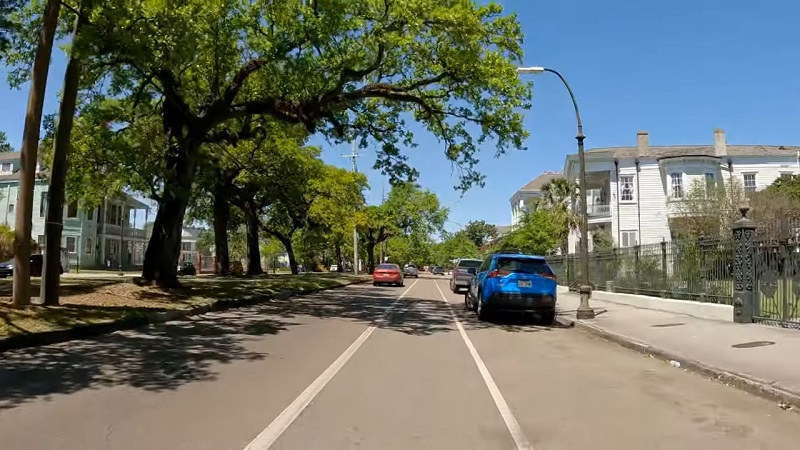
Esplanade Avenue functioned as a cultural fault line between two contrasting communities. On one side, French Creoles preserved traditions steeped in Catholicism, the French language, and European aesthetics.
On the other side, Anglo-American newcomers brought Protestant values, the English language, and new money. That invisible divide influenced more than addresses, it sculpted New Orleans’ architecture, flavors, and social structure.
Pastel-colored mansions with columned verandas reflect the Creole desire for elegance and expression. Wrought-iron fences curve gracefully around gardens shaded by banana trees and magnolias. Horse-drawn carriages once rolled slowly past homes where Creole intellectuals, musicians, and artists hosted gatherings beneath gas lanterns.
Esplanade serves not only as a boulevard, but it also acts as a physical narrative of tradition and transformation. Each block whispers remnants of a time when family honor, culinary pride, and artistic ambition shaped New Orleans culture.
Modern Esplanade welcomes strollers, cyclists, and street performers. Locals jog under moss-draped oaks while tourists marvel at the seamless blend of old and new. Elegant bed-and-breakfasts open their shutters beside art studios and independent cafés.
9. St. Charles Avenue – The Parade Route Royalty
Named for Saint Charles Borromeo, St. Charles Avenue carries an aura of grandeur threaded with echoes of historical pride and seasonal festivity. Ancient oaks bend across its wide lanes like arms embracing a shared memory, their limbs heavy with Mardi Gras beads left by float-riders and parade-goers through generations.
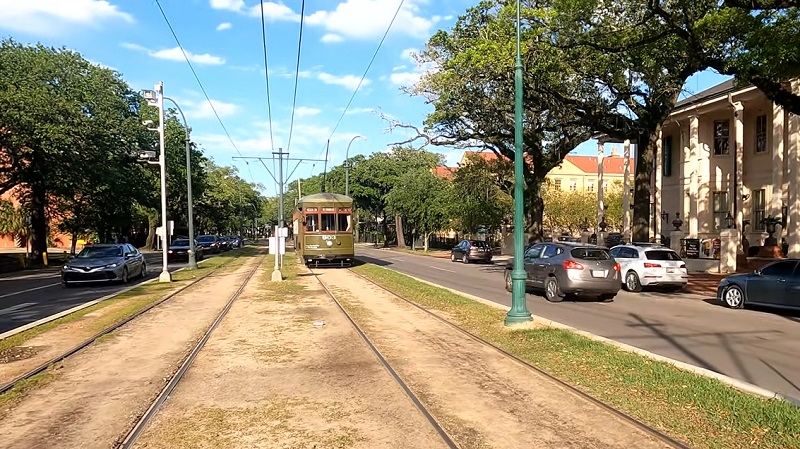
Streetcars with wooden benches and brass fixtures clatter along the neutral ground, maintaining a rhythm that connects past to present in clinks and creaks.
Architecture reveals layers of affluence and tradition. Greek Revival mansions, some dating back to the 1800s, display fluted columns, sweeping porches, and ironwork worthy of portraiture. Wide front yards are stage sets of their own, often hosting pre-parade gatherings filled with laughter, music, and gumbo pots bubbling over makeshift burners.
During Carnival season, transformation arrives. Floats rumble forward carrying masked krewes who toss beads, trinkets, and moon pies into roaring crowds. Residents and tourists compete for throws with wild cheers and extended hands.
Front porches become balconies of celebration, coolers replace garden statues, and music bounces off every facade.
Local children perched on ladders shout for attention. Marching bands pound rhythms into pavement, dancers whirl, and elaborate costumes blur by in vibrant procession. Business owners decorate with pride, and even banks and law firms surrender to festivity with purple, green, and gold flourishes draped over their facades.
As a practical snapshot, consider the key elements that make St. Charles Avenue an icon:
- Transportation Heritage: Home to the world’s oldest continuously operating streetcar line.
- Carnival Connection: Hosts major Mardi Gras parades like Rex and Zulu.
- Architectural Grandeur: Features antebellum mansions and historic churches.
- Natural Beauty: Canopied with ancient live oaks that form tunnels of shade and symbolism.
- Community Rituals: Porch parties, ladders for kids, shared foods, and themed decor.
10. Desire Street – A Name Immortalized in Theater
Desire Street holds more than a postal code, it holds metaphor, memory, and meaning. Tennessee Williams turned it into legend through his play A Streetcar Named Desire, forever entwining literature and geography.
That streetcar once rumbled through Faubourg Marigny and Bywater, its destination etched into every sign and line of dialogue.
Name alone evokes passion, ambition, heartbreak, and craving for something greater. Desire is not just a title, it is a constant tension that pulses throughout New Orleans. Quiet homes and modest storefronts now line this street, but every address breathes with creative resonance.
Mention of Desire Street instantly conjures theatrical themes: the fragility of New Orleans culture, the struggle for relevance, and the electricity of connection. Tennessee Williams didn’t choose the name by accident. He pulled it from reality and gave it eternal symbolic weight.
Tourists wander into the area with cameras ready, seeking a brush with literary history. Locals go about their mornings unaware that their sidewalks echo on stages around the world. Neighborhoods like Bywater and St. Claude intersect with Desire, adding layers of grit, rhythm, and realism.
Desire Street invites reflection on what people pursue, love, expression, survival, escape. Everything becomes sharper here. The name triggers personal introspection and cultural analysis. In terms of cultural references tied to the street, consider the following:
- “A Streetcar Named Desire” (1947): Play by Tennessee Williams that introduced the world to Blanche DuBois and Stanley Kowalski.
- Actual Desire Streetcar Line: Operated until 1948, connecting neighborhoods and stories along its route.
- Desire Housing Development: Public housing built in the 1950s that became historically significant in the city’s urban history.
- Street Art and Tours: Murals and local guides keep the narrative alive.
Summary
Each street sketches a different layer of New Orleans culture. Bourbon sings with revelry, Royal whispers elegance, Rampart calls for justice, and Desire whispers of dreams and drama.
No road is merely asphalt here. Streets serve as voices—raw, rhythmic, reverent. Together, they narrate the soul of New Orleans in movement, memory, and music.
